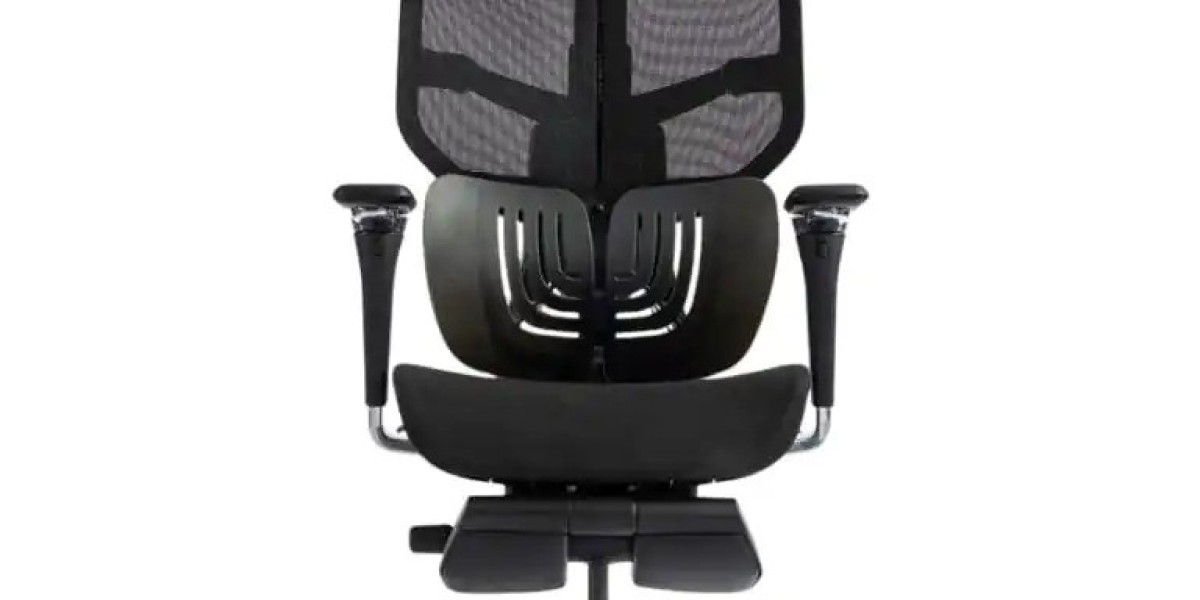What is an Office Massage Chair?
An office massage chair is a specially designed chair that combines the standard features of an ergonomic office chair with integrated massage functions. These chairs target areas like the neck, shoulders, and lower back using rollers, vibration, or air compression, and often include heat therapy. The goal is to provide physical relief from tension and promote better posture and relaxation during work hours.
Benefits of Office Massage Chairs
Massage chairs provide numerous health benefits. First, they help reduce muscle tension caused by prolonged sitting. The built-in massage mechanisms target stiffness in the back, neck, and shoulders—areas where office workers most often feel discomfort. Second, massage chairs can help improve blood circulation. This reduces fatigue, prevents numbness, and can improve alertness during long work sessions. Third, these chairs support better posture. As muscles relax, it becomes easier for users to maintain a straight, supported spine alignment. Additionally, regular massage can lower stress levels and anxiety by reducing cortisol, the stress hormone. This leads to a more focused, calm state of mind at work. The result: better mental clarity and improved overall productivity.
Key Features to Look For
When choosing an office massage chair, there are several essential features to consider. One of the most important is adjustable massage settings. A good chair allows users to choose the intensity and type of massage—rolling, kneading, vibration, or tapping. Another key feature is heat therapy. Heat combined with massage improves circulation and helps further relieve muscle tension. Targeted massage zones are also crucial. Look for a chair that can focus on specific areas such as lower back or upper shoulders. Some models also include leg or thigh massage functions. Adjustable recline and lumbar support ensure comfort during long work hours. Additionally, chairs should be constructed with quality materials for durability, have a quiet motor to avoid distractions in shared environments, and include a user-friendly remote control for ease of use.
Advantages and Drawbacks
Office massage chairs come with many advantages. They provide on-demand physical relief, help prevent repetitive strain injuries, improve comfort, and reduce the need for external treatments like physiotherapy or manual massage. They can also contribute to a more positive work environment, especially if offered as part of an office wellness program. However, there are drawbacks to consider. Massage chairs are typically more expensive than regular ergonomic chairs. They can also be bulky, taking up more space. Maintenance can be more complex due to their electrical components, and overuse may lead to soreness if intensity is too high or improperly adjusted. They are also not a replacement for movement or stretching—workers should still take regular breaks to walk and stretch throughout the day.
Types of Office Massage Chairs
There are various types of office massage chairs suited for different needs. Standard massage office chairs look like regular desk chairs but include vibration or rolling massage features in the backrest. Executive massage chairs offer more padding, larger seats, and may include heat and full back massage. Reclining massage chairs with ottomans or footrests allow for full-body relaxation but may not be practical in all office settings. Compact models are designed for smaller spaces and basic use, while high-end zero-gravity chairs offer complete recline and immersive massage, though these are more suitable for break rooms or wellness zones than regular desk work.
Choosing the Right Chair
To choose the right massage office chair, start by assessing your specific needs. If you suffer from lower back pain, look for lumbar-focused massage. If stress is your main concern, consider a chair with soothing heat and full-back kneading. Set a clear budget—massage chairs range widely in price from budget options under $300 to premium models costing over $1000. Measure your workspace to ensure the chair fits, especially if it reclines or includes a leg rest. Test the chair if possible, or read detailed reviews about durability, noise level, and real-world comfort. Look for a warranty covering electrical parts and motors. Lastly, make sure it also meets your daily ergonomic needs like adjustable height and support—not just the massage function.
Maintenance and Care
Proper maintenance will extend the life of your chair. Clean the upholstery regularly using a soft cloth and appropriate cleaner. Avoid spills and excessive moisture. Check that the motors and massage components operate smoothly, and inspect power cords and control panels for wear or damage. Some parts like rollers may need occasional lubrication or cleaning. Always follow the manufacturer’s instructions, and unplug the chair when not in use for long periods.
Office Wellness and Employee Benefits
Many modern workplaces include massage chairs in shared break areas as part of employee wellness programs. This investment can boost morale, reduce workplace stress, and show that the company values employee well-being. Even a few minutes in a massage chair during lunch or a break can reduce burnout and increase focus. For remote workers, having a massage office chair at home can provide similar benefits—encouraging healthy work habits and stress relief in a solo environment.
Final Thoughts
An office massage chair is a powerful combination of comfort, ergonomic support, and wellness technology. Whether you’re outfitting a home office or upgrading a corporate workspace, the benefits of reduced tension, improved posture, and increased productivity make these chairs a worthy investment. While the upfront cost and space requirement may be considerations, the long-term physical and mental advantages far outweigh them. The right massage chair can transform your daily work experience from tiring to therapeutic—one relaxing session at a time.





